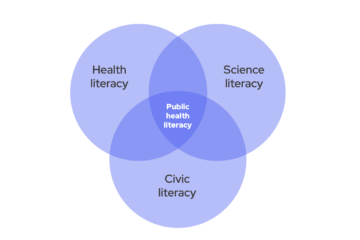As the COVID-19 pandemic spreads, public health professionals are on the front lines protecting American communities by:
- Finding answers and tracking cases to slow the spread of COVID-19;
- Testing people and processing tests in public health labs;
- Being a credible voice of reason about what’s happening now, what may happen next, and ways to keep people healthy and safe;
- Using data to inform critical decision-making like closing schools or businesses;
- Driving the community’s response and coordinating with hospitals, schools, first responders, and other partners; and
- Performing many other tasks that are seen and unseen by the public.
Often risking their safety, state and local government public health staff have been working tirelessly for months. They are playing a critical role on the front lines, but their efforts often go unnoticed, under-appreciated, and — more importantly — underfunded. While the public health workforce has been called the most essential element in our collective efforts to ensure the public’s health, without adequate funding, it has been shrinking.
Since the Great Recession, state and local government health agencies have lost at least 40,000 positions, more than one-fifth of the total workforce. We have a significantly smaller “team” of responders than we did for H1N1 in 2009-2010. The number of employees in local public health agencies has declined by more than 15 percent, and in state agencies, that number is also about 15 percent.
There is an unfortunate yet common misconception that health departments can simply “staff up” to respond to public health crises. But preparing for and responding to even a “minor” epidemic requires careful planning, specialized skills, and sustained funding — and it’s even more true for a historic pandemic like COVID-19.
The public health field does not have an endless supply of people or dollars to pull from when emergencies arise. Communities don’t wait until there’s a fire to start hiring firefighters. When there’s a fire, we expect firefighters to show up with the right number of people and the right equipment. Our public health system should be no less prepared.
When there’s a fire, we expect firefighters to show up with the right number of people and the right equipment. Our public health system should be no less prepared.
Political leaders from both parties, media professionals, business leaders, and the public have ignored repeated calls for additional funding and concern about a shrinking workforce from national public health advocacy organizations.
It is now clear that we are not as prepared as we should be. Our neglect of the public health infrastructure and repeated cuts to public health funding mean necessary staff or supplies aren’t available. It slows the response. It means we are always playing catch-up. With each cut, we take a greater risk with our nation’s health than we would with a fully funded response led by public health experts.
Prominent leaders are calling for consistent funding for local and state health departments, but will it happen? Similar calls came during the H1N1, Zika, and Ebola outbreaks. But as the number of cases decline, Americans slowly slide back into complacency, media attention ebbs, and the interest and political will to strengthen our public health system dissipates.
Unlike these past outbreaks, the spread and apparent ease of transmission of COVID-19 has already caused businesses to close, crashed the stock market, and disrupted our daily lives with school closures, cancelled events, and increased social distancing. Maybe the disruption caused by COVID-19 will help us recognize that our nation’s local and state public health agencies are more than rapid-response systems, that they need funding to build preparedness teams and protocols. Maybe this will finally be enough to help us recognize that continued cuts to public health infrastructure jeopardize not only our health but also our economy and our very way of life. We must capitalize on the nation’s shared concerns to fortify our public health infrastructure and stay committed to it even after the nation’s attention moves on.





